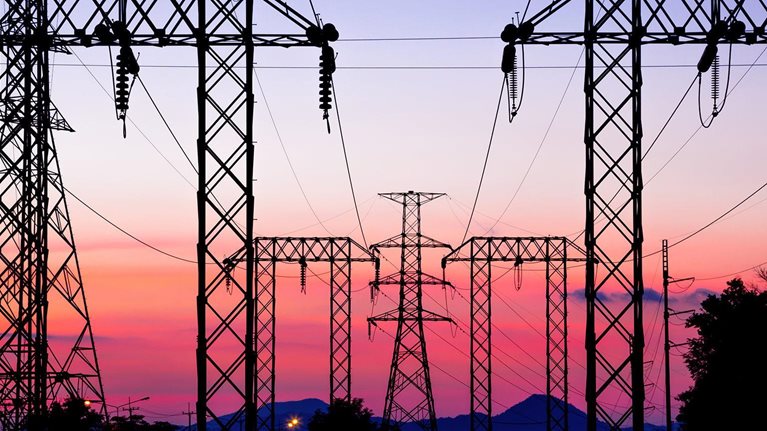Cheap, plentiful electricity fuels higher growth, and all the more so in the digital age. So it’s a propitious time for technology to be improving the dynamics of supply and demand. Lower-cost higher-capacity battery storage is opening new opportunities for commercial and industrial customers to store cheaper power profitably in off-peak periods. And better storage is helping break through the impasse that has hampered the growth of electric-vehicle charging stations. Power utilities, while facing a host of strategic challenges as they tackle growth opportunities, are moving up the digital learning curve. That’s opening new, profitable pathways to supplying an energy-hungry world.
Should battery storage be on your strategic radar?
By Jesse Noffsinger, Matt Rogers, and Amy Wagner
Many commercial and industrial users can already save money.
The use of stationary batteries to store energy on commercial and industrial sites is rising because costs have been falling—from $1,000 per kilowatt-hour in 2010 to $230 in 2016, according to McKinsey research—and are heading even lower (toward $100) by 2020. In light of this, we believe the market for distributed battery installations in the United States is set to expand rapidly—as much as 50 percent a year. To date, such installations have been few and far between, mostly limited to specific applications in places such as California with expensive “demand charges” (the monthly payment based on peak demand). Because the whole year’s payments are tied to the highest hours of energy usage, there is a natural incentive for users to lower their costs by smoothing out demand.
Discover and subscribe to McKinsey Quarterly Audio
Five ways to subscribe:
That is where the newer batteries come in: they can cost effectively store more energy when prices are low and then release it when they are high. Many commercial users in energy-intensive industries can already save money through storage (exhibit), particularly those in high-cost states. Improved back-up reliability and resilience are other benefits. The aggregation of distributed batteries into virtual power plants could even allow business customers to sell power back to the grid.

In short, as costs of storage fall, the economics of how to manage consumption could profoundly change. Businesses that get the timing right—investing in storage when the costs are less than the average demand charges—should improve their operations, cut their energy use, and score a competitive advantage.
For more information on battery storage, see “Why the future of commercial battery storage is bright.”
About the authors
Jesse Noffsinger is a specialist in McKinsey’s Seattle office; Matt Rogers is a senior partner in the San Francisco office, where Amy Wagner is a senior expert.
Charging up the electric-vehicle market
By Stefan Knupfer, Jesse Noffsinger, and Shivika Sahdev
The economics of EV charging stations are often hobbled by high charges for connections to the power grid; more powerful, lower-cost battery storage could provide relief.
It’s a chicken-or-egg situation. Consumers will be reluctant to buy an electric vehicle (EV) if they worry it will run out of power. But unless more EVs are sold, not enough charging infrastructure will be built. As of 2015, there were seven times as many gas stations as public charging stations in the United States, and few of the latter were fast-charging.
Battery storage can help resolve this conundrum by reducing the “demand charges” paid by charging stations. These fees are based on the highest rate, measured in kilowatts (kW), at which electricity is drawn during any 15- to 30-minute interval in the monthly billing period. In a high-cost state, they can be as high as $3,000 to $4,500 a month—far too much to be spread over the few EVs lining up on the forecourt today.
On-site batteries, however, can charge and discharge using direct current (DC) and connect to the grid using a large inverter. The batteries can be charged from the grid at times when costs are lower, store the power, and release it when demand is higher. A battery with a 300 kW hour (kWh) capacity can manage peak demand through several two-vehicle charges and recharge in between. By managing the load profile this way, the on-site battery-storage system can reduce demand charges to a minimum (exhibit). This greatly improves the economics of charging. It also helps that the costs of battery storage are falling fast, with forecasts for the near future as low as $100 per kWh, according to McKinsey research.

For more on EVs and battery storage, see “How battery storage can help charge the electric-vehicle market.”
About the authors
Stefan Knupfer is a senior partner in McKinsey’s Stamford office, Jesse Noffsinger is a specialist in the Seattle office, and Shivika Sahdev is an associate partner in the New York office.
Global utilities: The hunt for value
By Tiziano Bruno, David Frankel, and Sébastien Léger
Companies need new strategies to deal with growing competition and tougher operating conditions.
As the world economy has grown, so has demand for power. Even so, the performance of utilities has been dull. The average cumulative return to shareholders of 50 major publicly listed utilities has been just 1 percent over the past decade.
However, the global power sector will still need more than $7 trillion in new investment (from 2016 to 2025)1; we estimate that new capacity coming online could create value pools rising by a robust 4 percent a year over the period. As the exhibit shows, those growth rates will likely vary considerably by region.

How can incumbent utilities convert this potential into profits? It won’t be easy. New players from the financial-services and oil and gas industries are entering the sector, while competition could further intensify as markets once closed to foreign competition by local governments open up. These trends will put pressure on prices, and therefore returns. Also, while the rise of renewables is a growth opportunity, the experience of the recent past in Europe suggests these new sources can depress the profitability of conventional sources of generation.
For the future to be better, utilities must change—more speedily and skillfully than many have proved capable of in the past. Retailers might seek higher gross margins by offering new products and services to commercial and industrial consumers. For residential consumers, they might focus on reducing the cost of service, for example, by digitizing core user and internal processes.

Competing in a world of sectors without borders
In general, bigger will be better. Digitization, industry convergence, market liberalization, and new entrants mean that the barriers to entry are falling. In this context, scale becomes a competitive advantage: renewables and residential sales, with their fixed-cost structure, are cases in point. To achieve scale, though, utilities will have to review their capital deployment and be ready to realize significant divestments. Consolidation may be another approach.
Established players should also consider new business models. In transmission and distribution, for example, they might seek operational synergies by expanding their role within the telecom infrastructure through investments and partnerships. To pursue sustainable value creation from new services, such as the electrification of transportation and other downstream opportunities, utilities might also want to consider entering new fields, such as insurance and consumer credit.
For additional insights and research, see “How utilities can keep the lights on.”
About the authors
Tiziano Bruno is an associate partner in McKinsey’s Milan office, David Frankel is a partner in the Los Angeles office, and Sébastien Léger is a partner in the Paris office.
The authors wish to acknowledge the many important contributions of Antonio Volpin to this article and the research behind it.
The power industry’s digital future
By Adrian Booth, Eelco de Jong, and Peter Peters
Digital technologies offer utilities an opportunity to deliver greater value as market and regulatory conditions shift.
In recent years, despite apparent barriers to entry such as tough regulation and high capital costs, utility companies have felt the growing impact of digital-age dynamics. New, digitally enabled players have entered power markets, intelligent apps have given customers both large and small more control over their energy usage, and low-cost batteries and renewables have altered demand patterns. Yet digital technology is also opening a new horizon for incumbent utilities to adapt and create value. Our work suggests that transforming operations and systems with digital technologies can create substantial value—a reduction in operating expenses of up to 25 percent, which can translate into lower revenue requirements (to cope with uncertain demand) or higher profits.
The benefits of digital initiatives are evident across the value chain (exhibit). In generation and transmission-and-distribution operations, predictive-maintenance algorithms help avoid excess work and premature asset replacements while better preventing power failures and other asset breakdowns. When fieldworkers make service calls, mobile applications provide real-time information about site conditions that lets workers safely complete inspections and repairs. Utilities can also borrow the sophisticated customer-service tools of digital-native companies, such as virtual agents that help ratepayers quickly resolve concerns. This is an important challenge given that industry deregulation in Europe and elsewhere has pushed customer-churn rates as high as 25 percent.

Digital priorities will vary among companies, whose potential performance gains can range from 20 to 40 percent in areas such as customer satisfaction, regulatory compliance, and safety. Fully integrated utilities in regulated markets, for instance, might first look for operational-expense savings as well as higher productivity and network reliability. In general, utilities will readily find 15 to 20 customer journeys and business processes that will be strong candidates for digital reinvention. We have seen that the initial wave of a transformation can generate enough cost savings to pay for itself so that a utility can roll any subsequent savings into further investments in digital initiatives. Over time, the adaptability and efficiency created by digital technologies will give utilities a stronger basis to compete.
For more information on the role of digital technology in the power industry, see “Accelerating digital transformations: A playbook for utilities.”
About the authors
Adrian Booth is a senior partner in McKinsey’s San Francisco office, Eelco de Jong is a partner in the Charlotte office, and Peter Peters is a partner in the Düsseldorf office.


